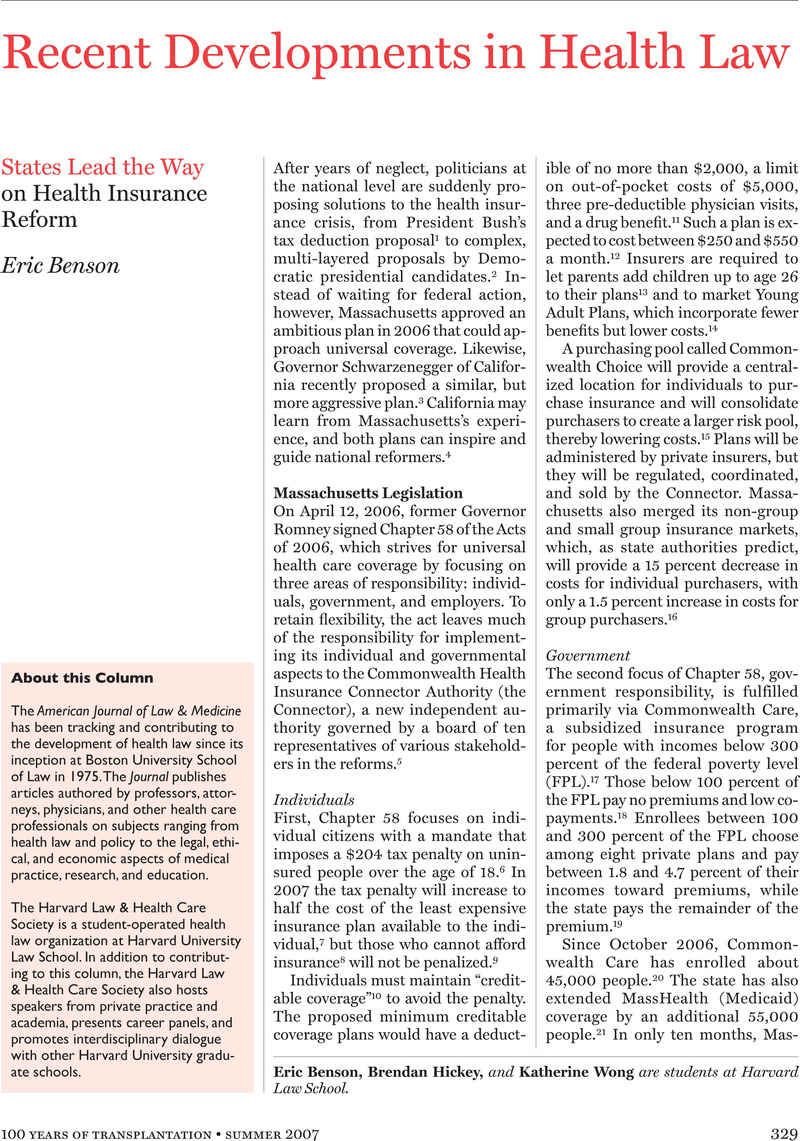Published online by Cambridge University Press: 01 January 2021

The American Journal of Law & Medicine has been tracking and contributing to the development of health law since its inception at Boston University School of Law in 1975. The Journal publishes articles authored by professors, attorneys, physicians, and other health care professionals on subjects ranging from health law and policy to the legal, ethical, and economic aspects of medical practice, research, and education.
The Harvard Law & Health Care Society is a student-operated health law organization at Harvard University Law School. In addition to contributing to this column, the Harvard Law & Health Care Society also hosts speakers from private practice and academia, presents career panels, and promotes interdisciplinary dialogue with other Harvard University graduate schools.